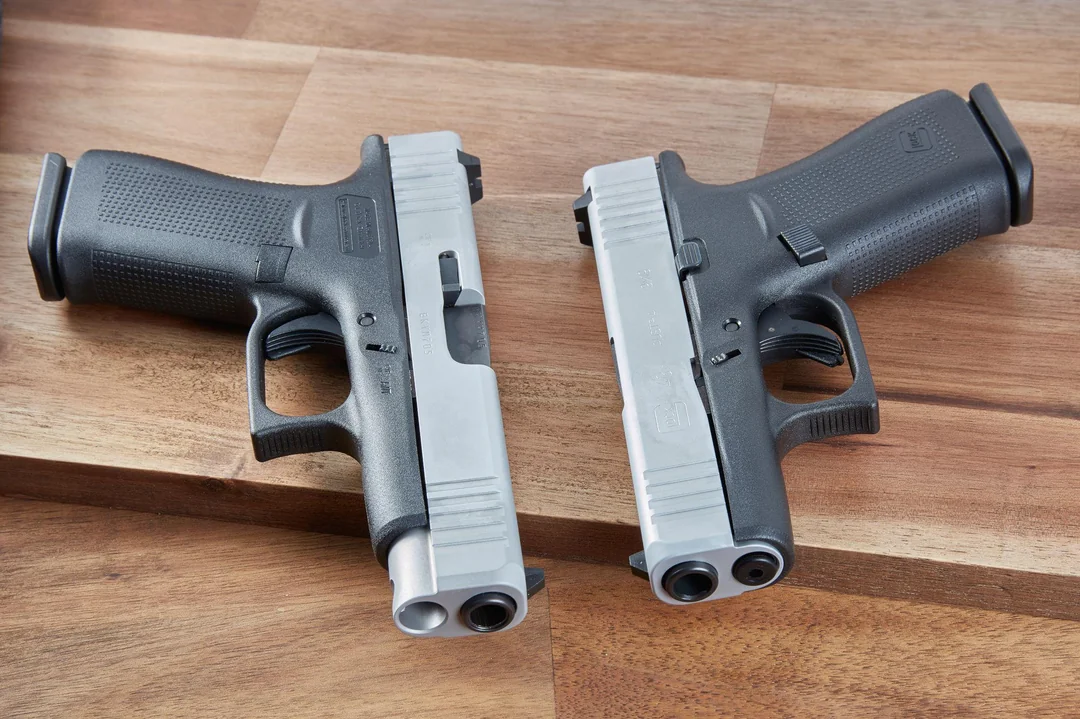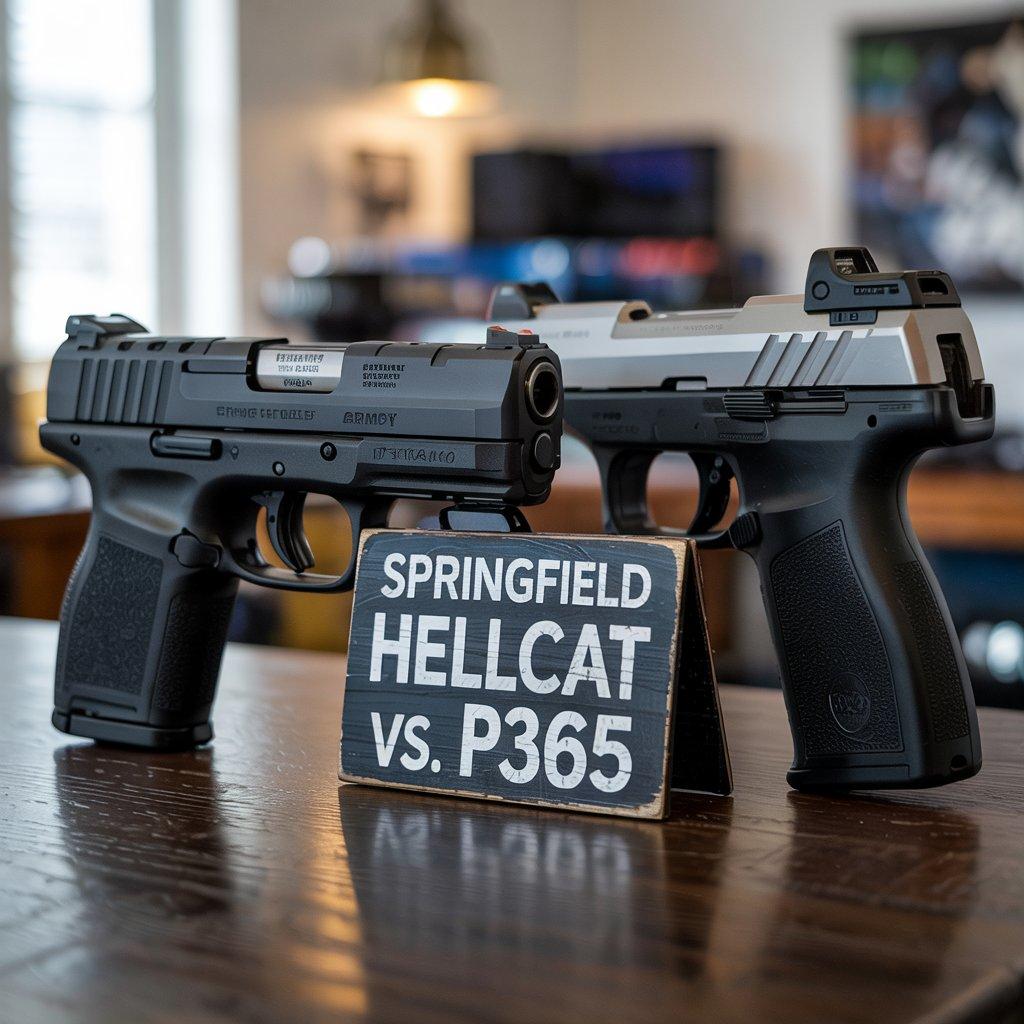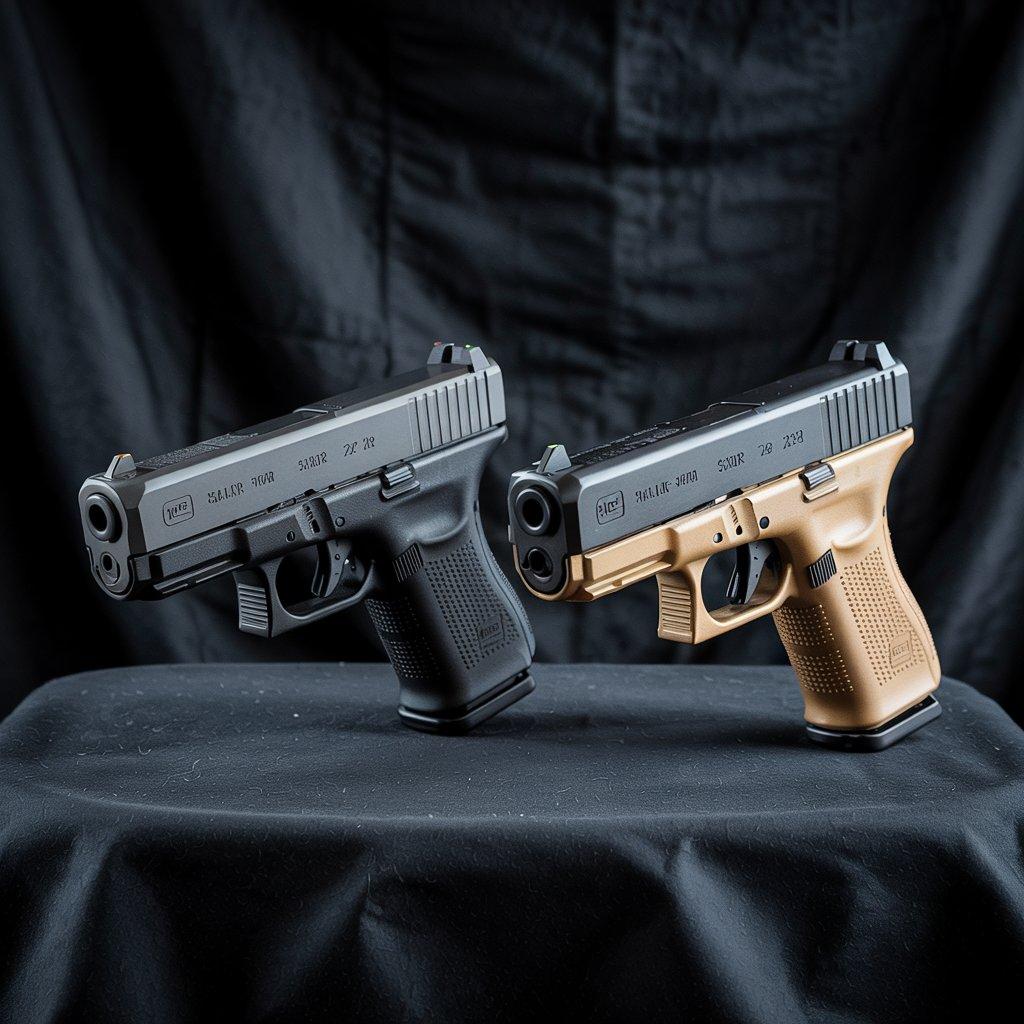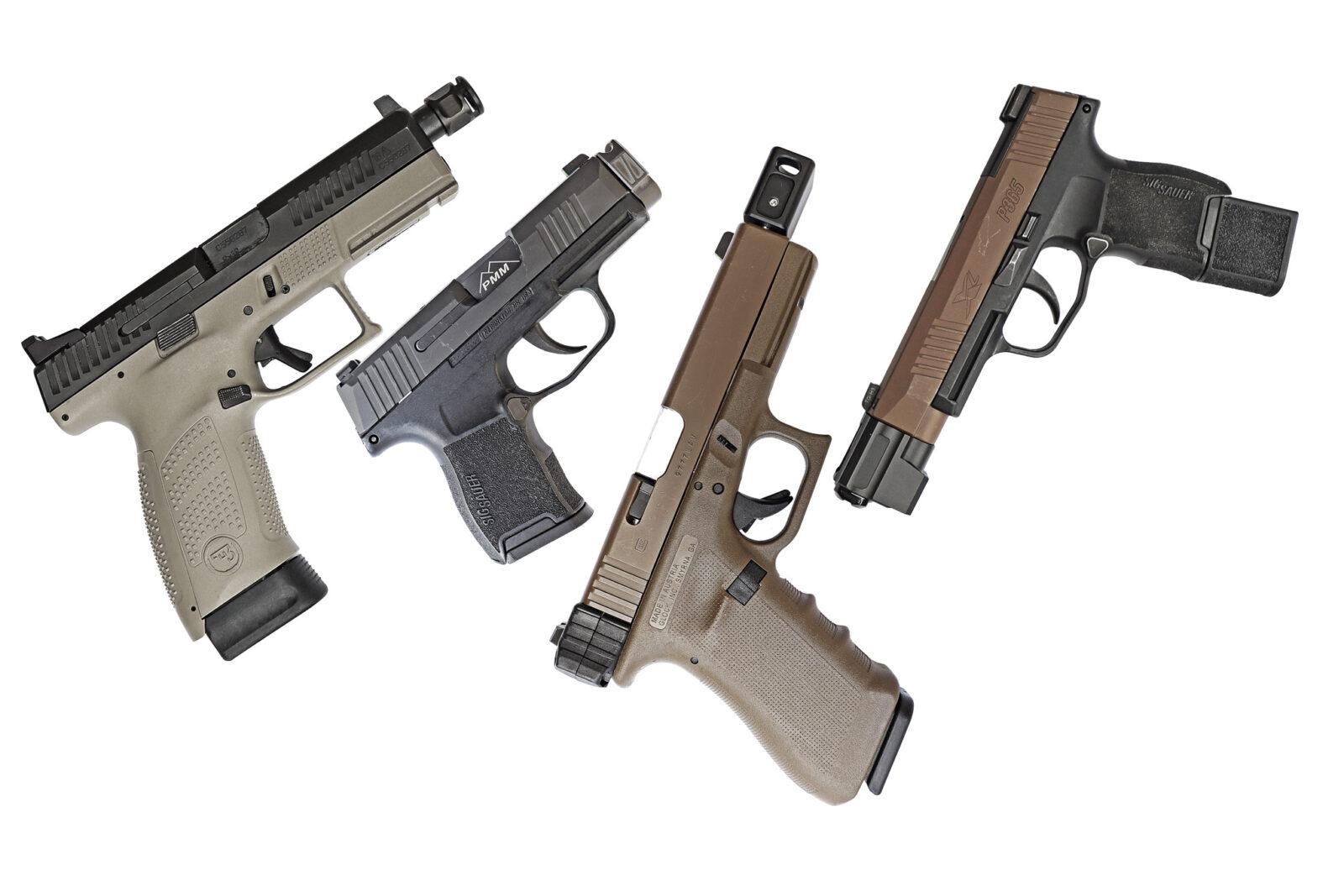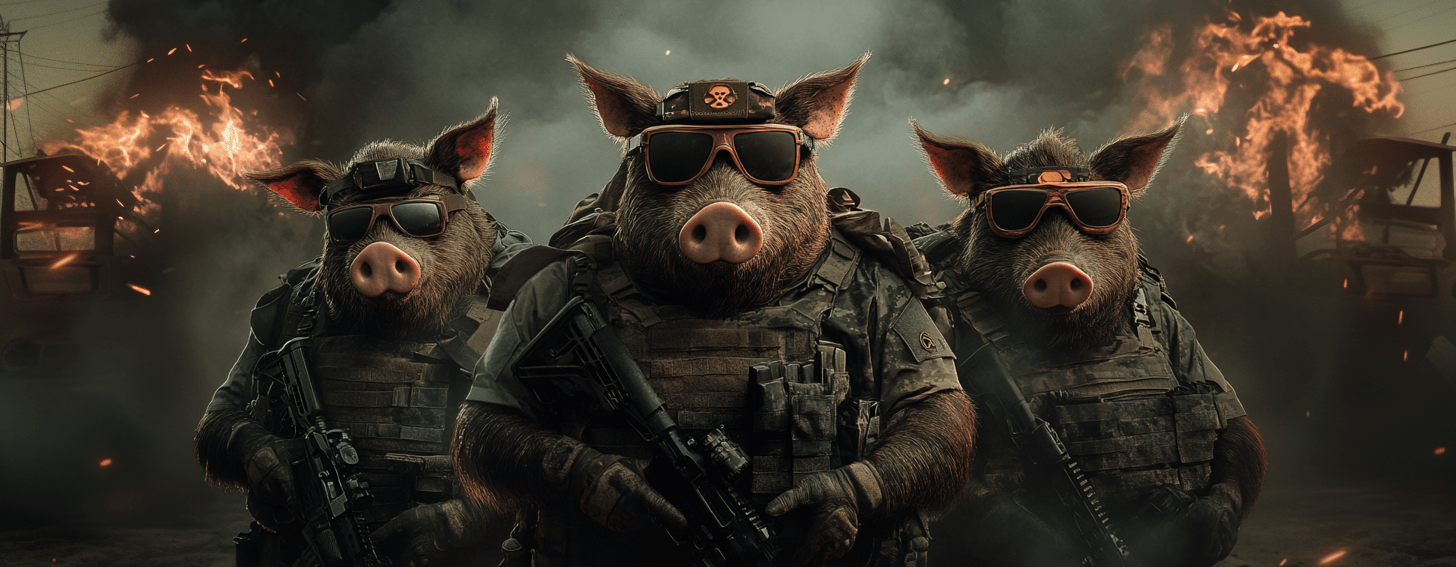The Glock 48 and Glock 43X are two of Glock’s most popular concealed carry models. Both pistols work admirably for home concealed carry, off-duty, or plainclothes work, and both would be functional for home defense. Both of these 9mm pistols share a lot of similarities. They have some key differences, however, and the savvy buyer would do well to understand them. Either pistol will likely serve you well, but understanding the differences will get you the Glock pistol that serves your needs the best. Let’s begin with a close look at each pistol, and the compare and contrast the Glock 48 vs. 43X.
Glock 48
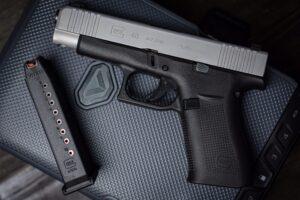
Introduced in January 2019, the Glock 48 is a very popular Glock model. It is the largest pistol in Glock’s Slimline (read: single stack) series. Externally in resembles a Glock 19, at least in profile, but it is much thinner. There are a few other size differences in the weeds, but the best shorthand description for the Glock 48 is “a single-stack Glock 19.” And most folks are pretty happy with that; the G19 is the most popular pistol on the planet for good reason, but some, like the author, found the grip thickness just a bit much.
The Glock 48 has a 4.02-inch barrel, putting in line with most pistols in the “compact” category. This gives it a sight radius sufficient for excellent accuracy and to meet expansion velocity for most modern hollow-point ammunition, yet is still small enough for comfortable carry. The slide has forward cocking serrations. The height of the pistol is 5.04 inches, which provides an adequate grip for most users. The grip frame holds a 10-round, standard capacity magazine, is textured all the way around, and lacks finger grooves.
The Glock 48 has taken off in popularity. It is extremely well-supported by the aftermarket. Holsters, sights, lights and a raft of other accessories are available for the Glock 48. Inherently and practically, it is an excellent pistol for concealed carry.
Glock 43X
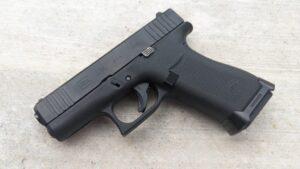
The Glock 43 is only a few months younger than the Glock 48, being released in summer of 2019, and splitting the size difference between the Glock 43 and the Glock 48. The Glock 43X has the same grip frame as the Glock 48, but the shorter slide and 3.41-inch barrel of the original Slimline 9mm Glock, the Glock 43. This gives it some of the best of both worlds: it has the larger, more comfortable grip of the Glock 48 (and it’s 10-round magazine), but the shorter, more concealable slide of the Glock 43.
Glock 48 vs 43X: Similarities
The Glock 48 and Glock 43X share a significant number of similarities. In fact, the two have far more similarities than differences. Both have many of the Gen5 features, yet don’t fall fully into Gen5. For example, both pistols have the Glock Marksman barrel for the best possible accuracy. Both pistols have front cocking serrations and both have a reversible magazine release. However, neither pistol comes with interchangeable backstraps; what you see is what you get, where grip size is concerned. Nor do either of these pistols have an ambidextrous slide stop lever or flared magazine well.
These pistols bring an awful lot to the table, however. Both are available in a Rail version featuring an accessory rail for mounting pistol-mounted lights. This is an important feature in a defensive firearm. Both also come in a MOS version for the mounting of pistol-mounted optics with the Shield RMSc footprint. This is a very popular optic footprint and will accommodate optics from a number of manufacturers.
An exciting new option available for both the Glock 48 and 43X is the A-CUT version with Aimpoint COA optic. Announced at SHOT 2025, this enclosed-emitter optic is cutting edge. The peculiar slide cut that accompanies it is also cutting edge; the optic is not secured only by screws, indicating that this will be a rugged, long-lived system. Of course, all MOA and A-CUT models of the Glock 48 and Glock 43X also have a rail for mounting a light.
Glock 48 vs Glock 43x: Differences
As we’ve seen, these pistols share a lot of similarities. In fact, there is only one real difference and that is the slide/barrel length. This is often overlooked as a superficial difference, but it has serious practical implications. The Glock 48’s barrel is 4.02 inches long, while the Glock 43X’s barrel is 3.41 inches long – over half an inch of difference. But is this enough difference to make a difference?
In favor of the longer barrel we have the virtues of sight radius, velocity, and balance. The longer barrel means a longer slide, which translated to longer sight radius. In this case the G48 has a .74-inch edge on the shorter 43X. Sight radius is the distance between the front and rear sights. The greater the sight radius, the greater the accuracy because slop in sight alignment translates to smaller effect on target. This is only really a factor if you primarily shoot with irons; the MOS versions of either pistol equipped with an optic largely renders sight radius argument obsolete.
A longer barrel also provides some additional velocity. Hollowpoint ammunition is designed to expand within a certain velocity envelope. Too little velocity and the bullet may not expand and, as a result, overpenetrate. Too much and the bullet is liable to break apart or overexpand and provide insufficient penetration. Much hollowpoint design is done around duty-sized pistols, and the 4-inch barrel of the Glock 48 comes closer to duty length (especially as law enforcement agencies around the country are adopting the Glock 45 with the exact same barrel length). That doesn’t mean bullets won’t perform out of the G43X, but a bit more research is in order to be sure you’re getting a good defensive load for your gun.
And the third factor in favor of the longer barrel/slide of the Glock 48 is balance. Some users find that the longer slide points a little more instinctively than the shorter Glock 43X. The added length can also be a boon to effective IWB (especially AIWB) carry as it prevents the butt of the gun from tipping forward and printing.
In favor of the shorter slide is concealability. The Glock 43X is smaller and lighter than the Glock 48, meaning it can go more places and be concealed in more situations. The shorter slide specifically is easier to conceal in outside-the-waistband applications. The missing half an inch can also make IWB carry more comfortable for smaller individuals and those with shorter torsos. Anyone who has carried inside the waistband knows that small changes can make a huge difference in comfort and concealability!
The one other minor difference is weight. The Glock 43X takes the prize at 16.4 ounces, empty with no magazine – just a hair over one pound. The Glock 48 is right at two ounces heavier (keep in mind this two-ounce difference also applies when the gun is loaded). Whether that difference is enough to make a difference is up to you, the user. As applied to concealed carry, this is negligible unless weight happens to be a significant factor for you for one reason or another.
So…Which Is Right for YOU?
When comparing the Glock 48 vs. 43X, which one is right for you? We can’t answer that for you, but we can give you the information to make your own decision. Both of these pistols have an awful lot going for them. Both enjoy legendary Glock reliability, both are comfortable to shoot, and accurate. Either is easy to carry, they share the same 10-round magazine, and of course the manual of arms for both is identical. The aftermarket has thrown its full weight behind both of these excellent pistols, so you won’t be left out with either one.
Glock has also made the same set of options available for both pistols. You can get either in the non-MOS “Rail” version, or with the MOS cut for use with RMSc-footprint optics. Though still now widely seen on the market due to very recent introduction, the A-CUT models with Aimpoint COA are forthcoming as well, and promise to do very well. With either of these pistols in the configuration of your choice, you will be very well armed.
The only real difference comes down the longer slide of the Glock 48 versus the shorter slide of the Glock 43X. The longer slide gives you a bit more sight radius, a bit more velocity, and perhaps some (admittedly very subjective) balance. The shorter top-end of the Glock 43X makes the gun smaller and a tad lighter – an important consideration if this is intended for use as a deep-concealment gun. And coupled with the longer grip frame, it is surprisingly easy to shoot for such a compact pistol.
The bottom line: it’s hard to go wrong with either one! The author admits a slight bias toward the Glock 48 he has owned for several years, but admits the Glock 43X is a fine pistol, too! Consider your use-case, and choose the one that serves you best.
